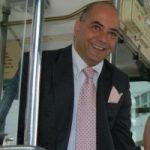Bank fee monitoring – more than just “penny pinching”
| 06-02-2018 | TIPCO | Sponsored content |
 The electronic analysis of bank fees not only cuts costs but also helps to sustainably improve the quality of treasury processes.
The electronic analysis of bank fees not only cuts costs but also helps to sustainably improve the quality of treasury processes.
Monitoring bank fees is not a task which is particularly popular in treasury departments. The idea of working through stacks of paper in the hope of understanding confusing bank fee nomenclature doesn’t usually generate much enthusiasm. This onerous task is often delegated, or statements are just blindly signed off on by the accounts department. That’s a shame. Why? Because the systematic analysis of bank fees can not only save considerable sums of money but can also lead to real improvements in treasury processes.
Evil intentions are not the only reason behind incorrectly charged items. Banks claim that updates of their fee calculation systems are sometimes responsible for standard fees being charged rather than those which have been specially negotiated with certain clients. Simply on the grounds of human error, there is a need to regularly check whether agreed fees are always taken into account by the software that banks use.
What do you need to do to retain an overview?
First of all, you need a bank which is capable of providing you with electronic statements in either the TWIST BSB or camt.086 formats. The gentle pressure that major corporates have put on their banks in recent years has paid off. Banks are increasingly responding positively to relevant customer requests. We will be happy to provide a list of those banks which can already provide these statements and in which countries.
On the other hand, your systems need to be able to read and process these formats. While you can open the statements relatively easily in Excel, special system support is necessary in order to perform in-depth analyses. Many corporates use web-based and TMS-independent platforms for this which have specially developed to monitor bank fees. Bespoke interfaces guarantee integration into your existing system landscape. A good example of such a system is the treasury information platform TIP, which is already in use at corporates such as Deutsche Post DHL Group or Lufthansa.
How will you benefit from regular checks?
The first benefit comes from checking that agreed fees are actually charged in practice. The press of a button is all it should take to highlight all discrepancies and provide a basis for demanding reimbursement from the bank. But this is just the beginning. Once transparency has been established about the services and fees charged, it doesn’t take long to draw conclusions about suboptimal payment processes. For example, if your analysis frequently highlights expensive “non-STP” or “repair” fees, you would be well advised to take a closer look at your payment processes. Perhaps there is simply a need to update incorrect master data. On the other hand, it might be necessary to brief your personnel on correct payment processes.
A further example: document-based payment methods. If your Canadian subsidiary in-structs a bank by fax to perform 800 transfers a month, this is not only a problem for your internal audit team but generally also extremely expensive. Here is another case relevant in the context of compliance which can be highlighted by bank fee monitoring: Cash withdrawals from company accounts at a bank branch may be above board in certain cases but should certainly be queried.
Another positive side effect of a transparent overview of bank fees is a comparison between different subsidiaries: Do all your subsidiaries in a particular country pay the same fee for the same service, and if not, why not?
Another situation: Imagine that you asked the general manager of your Spanish subsidiary three months ago to close two unnecessary EUR accounts, but the account management fee keep appearing on the statements. Electronic statements can therefore help you to insist on compliance with your cash management policy.
However, this issue is not only suitable as a means of slapping the wrists of banks and in-ternal troublemakers. The systematic processing of bank statements also provides you with exactly the data you need for your next payment service RFP: The relevant products you use and volumes are presented on a silver platter; meaning that you don’t need to painstakingly collect these data from your subsidiaries. Besides the quantitative factors, the analysis of bank fees also provides you with a better impression of the quality of the services provided by your banks. Armed with these data, you are far better prepared for bank negotiations.
What will the future bring?
What might still sound far-fetched today may soon become reality: Work is already ongoing in some pilot projects to directly book fee-based information from electronic account statements in ERP systems. This is based on statements prepared using the ZUGFeRD format, a standard developed by the Forum for Electronic Invoicing Germany (FeRD), which will make it possible to send invoices in a defined PDF format which can then be automatically read and processed.
Parallel to this, the German Association of Corporate Treasurers (vdt) has formed a working group to establish an XML format proposal which meets the minimum requirements necessary for bank fees to be VAT deductible. And, in the near future, electronic statements may also include all of the key elements of banks’ year-end summaries.
Efforts to introduce electronic bank fee statements are also being intensified internationally: The Common Global Implementation (CGI) initiative, investigating the standardisation of payment formats, has set up a working group to further develop camt.086, the ISO standard for cash management statements. Numerous other initiatives in Germany, Austria and France are also regularly bringing banks, corporates and system providers together for meetings. Increasing numbers of medium and large corporates are starting relevant projects and sharing their experiences at fairs such as those of the Association of Financial Profes-sionals (AFP) in Denver and at the Finance Symposium organised by Schwabe, Ley & Greiner. This issue is also being addressed in academia, highlighted by the numerous dis-sertations and theses focussing on how theory and practice should be combined. Last but not least, system providers are increasingly integrating bank fee monitoring into their solutions.
How can you help?
Rising demand from corporates is ensuring that this issue remains firmly at the top of credit institution agendas. While banks of course are keen to pass on the necessary investment costs to their customers, don’t let yourself get caught up in any discussions on this issue. After all, you don’t pay other suppliers to send you electronic invoices that you can understand.
 TIPCO Treasury & Technology GmbH
TIPCO Treasury & Technology GmbH
[button url=”https://www.treasuryxl.com/community/companies/tipco-treasury-technology-gmbh/” text=”View company profile” size=”small” type=”primary” icon=”” external=”1″]
[separator type=”” size=”” icon=””]

 These are volatile times in the world of Bitcoin and all other cryptocurrencies. Over the last 2 months there have been large swings in the price – price opened up around USD 10,000 at the start of December 2017 and then roared ahead to over USD 19,000; this was followed by continual declines with the price dropping below USD 9,000 at the end of last week. This morning the price has gone under USD 8,000. Bitcoin has been renowned for its volatility, but are there fundamental factors at work that are affecting the price?
These are volatile times in the world of Bitcoin and all other cryptocurrencies. Over the last 2 months there have been large swings in the price – price opened up around USD 10,000 at the start of December 2017 and then roared ahead to over USD 19,000; this was followed by continual declines with the price dropping below USD 9,000 at the end of last week. This morning the price has gone under USD 8,000. Bitcoin has been renowned for its volatility, but are there fundamental factors at work that are affecting the price? There are also other forms of cash concentration:
There are also other forms of cash concentration:
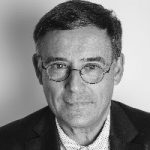

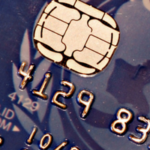
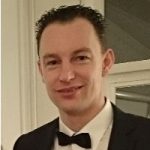
 Over the last year there have been impressive price gains in Greek Government bonds leading to equally impressive falls in yields. Greek 2-year bonds are now yielding 1.35% – down from around 7% at the start of 2017. Similarly, 10-year bonds are now yielding 3.66% – a significant fall since the start of 2017. In fact, the yield on Greek 2-year bonds is now lower than in USA where the current yield is 2.09%. Last week S&P upgraded Greece’s long term credit rating to ‘B’ from ‘B-‘. It would appear that Greece is doing everything right. Right?
Over the last year there have been impressive price gains in Greek Government bonds leading to equally impressive falls in yields. Greek 2-year bonds are now yielding 1.35% – down from around 7% at the start of 2017. Similarly, 10-year bonds are now yielding 3.66% – a significant fall since the start of 2017. In fact, the yield on Greek 2-year bonds is now lower than in USA where the current yield is 2.09%. Last week S&P upgraded Greece’s long term credit rating to ‘B’ from ‘B-‘. It would appear that Greece is doing everything right. Right?


 The BEPS (base erosion and profit shifting) initiative is an OECD initiative, approved by the G20, to identify over a period to December 2015, ways of providing more standardised tax rules globally. Phases two and three involve implementation and monitoring (together with some remaining standard setting and clarification). BEPS is a term used to describe tax planning strategies that rely on mismatches and gaps that exist between the tax rules of different jurisdictions, to minimise the corporation tax that is payable overall, by either making tax profits “disappear” or shift profits to low tax operations where there is little or no genuine activity. In general BEPS strategies are not illegal; rather they take advantage of different tax rules operating in different jurisdictions, which may not be suited to the current global and digital business environment.
The BEPS (base erosion and profit shifting) initiative is an OECD initiative, approved by the G20, to identify over a period to December 2015, ways of providing more standardised tax rules globally. Phases two and three involve implementation and monitoring (together with some remaining standard setting and clarification). BEPS is a term used to describe tax planning strategies that rely on mismatches and gaps that exist between the tax rules of different jurisdictions, to minimise the corporation tax that is payable overall, by either making tax profits “disappear” or shift profits to low tax operations where there is little or no genuine activity. In general BEPS strategies are not illegal; rather they take advantage of different tax rules operating in different jurisdictions, which may not be suited to the current global and digital business environment.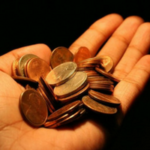 Payments is increasingly seen as an area that is ripe for disruption, having the potential to enhance payment processing. To overcome the current structural weaknesses in the payments area including low speed, high expenses, financial institutions are increasingly adopting the idea of blockchain or distributed ledger technology (DLT). This in order to offer (near) instant cross-border payments at lower costs, higher security and more reliability. Up till recently most of these trials have been non-interoperable stand-alone solutions. But that may change!
Payments is increasingly seen as an area that is ripe for disruption, having the potential to enhance payment processing. To overcome the current structural weaknesses in the payments area including low speed, high expenses, financial institutions are increasingly adopting the idea of blockchain or distributed ledger technology (DLT). This in order to offer (near) instant cross-border payments at lower costs, higher security and more reliability. Up till recently most of these trials have been non-interoperable stand-alone solutions. But that may change!
 Despite interest rate being very low for the last few years, general consensus is that rates will eventually rise – rates will become more normal. Rates are being held down by the actions of central banks with their quantitative easing. As QE is scaled backed and stopped this should allow rates to rise from their current low levels. The big question is – how high will rates rise? The Euro is not yet 20 years old and that means that whilst there is a lot of data, it does not require looking through 50 or 60 years of data to try and find the norm.
Despite interest rate being very low for the last few years, general consensus is that rates will eventually rise – rates will become more normal. Rates are being held down by the actions of central banks with their quantitative easing. As QE is scaled backed and stopped this should allow rates to rise from their current low levels. The big question is – how high will rates rise? The Euro is not yet 20 years old and that means that whilst there is a lot of data, it does not require looking through 50 or 60 years of data to try and find the norm.